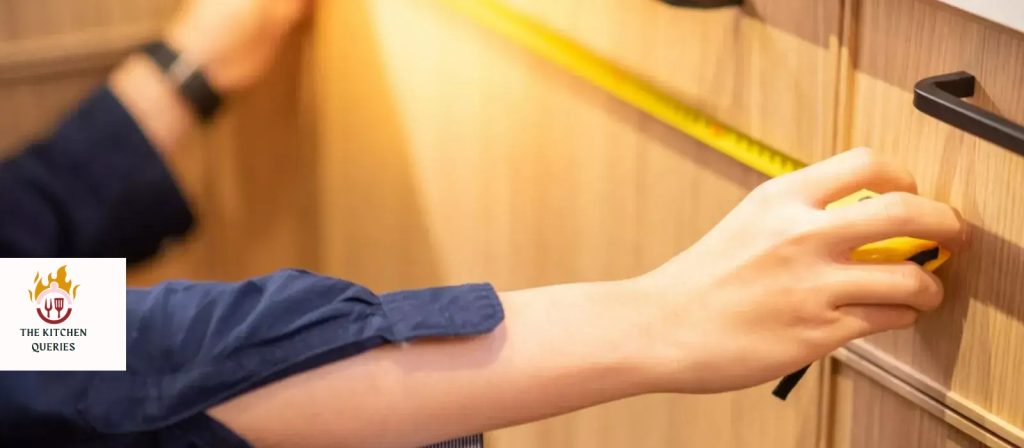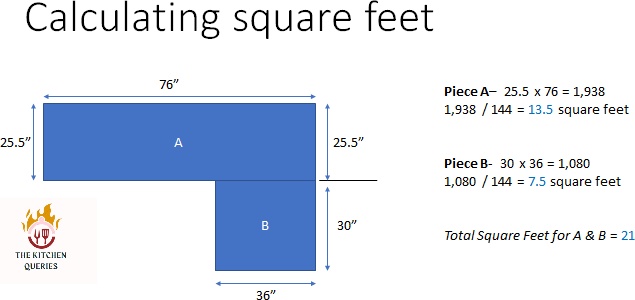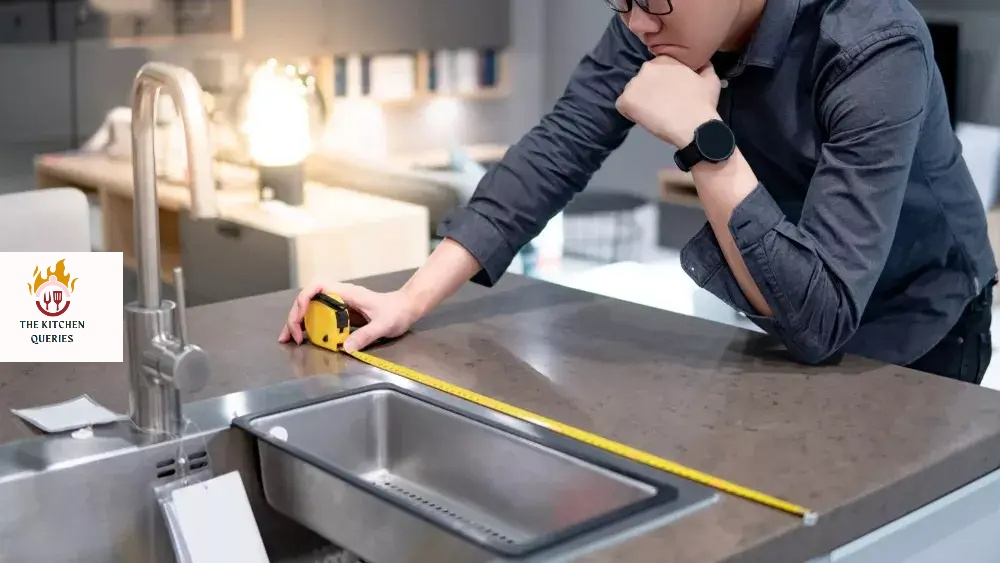When it comes to kitchen remodeling or renovation projects, accurately measuring the square footage of your countertop is crucial for various reasons.
Whether you’re planning to install new countertops, calculate material costs, or want a clear understanding of your kitchen’s layout, knowing how to measure the square footage is essential.
By gathering precise measurements, you can ensure that your countertop fits perfectly, avoid unnecessary expenses, and make informed decisions throughout the remodeling process.
In this guide, we will walk you through the step-by-step process of measuring your countertop’s square footage, allowing you to tackle your kitchen project with confidence and precision.
What do you need?
First, assemble your “tools” for taking the measurements:
- Tape measure
- Pen
- Paper
- Calculator
Steps to Measure an Existing Countertop:

To measure the square footage of your existing countertop, follow these steps:
1. Clear the countertop:
Remove any items, appliances, or clutter from the surface of your countertop to ensure accurate measurements.
2. Gather necessary tools:
Equip yourself with a measuring tape, paper, and a pencil or pen for jotting down measurements.
3. Measure length:
Starting from one end of the countertop, use the measuring tape to determine the length.
Place the tape measure at the edge of the countertop and extend it to the opposite edge. Write down the measurement in inches or feet.
4. Measure width:
Move along the width of the countertop and measure it in the same manner as the length. Again, record the measurement.
5. Account for irregularities:
If your countertop has any irregular shapes or protrusions, measure those separately.
For example, if there is a peninsula or an overhang, measure the length and width of these areas individually.
6. Calculate the square footage:
To find the square footage of a rectangular or square countertop, multiply the length by the width.
For example, if the length is 6 feet and the width is 3 feet, the square footage would be 6 x 3 = 18 square feet.
If you have multiple sections with different dimensions, calculate each one separately and then sum them up for the total square footage.
7. Consider backsplash and edging:
If your countertop includes a backsplash or has an additional edge thickness, measure those separately.
Add the measurements to the overall square footage or subtract them if they won’t be covered by new countertop material.
8. Round up:
To ensure you have enough material for your countertop project, it’s advisable to round up your measurements.
This accounts for any cutting or fitting that may be required during installation.
By following these steps, you can accurately measure the square footage of your existing countertop, providing you with valuable information for planning your remodeling project or purchasing new materials.
Will the countertops be already cut when they arrive on-site?

The answer to whether countertops will be pre-cut when they arrive on-site can vary depending on several factors.
It depends on the supplier or manufacturer you are working with, the type of countertop material you have chosen, and the specific requirements of your project.
Some countertop suppliers offer pre-cut countertops that are fabricated in a factory or workshop based on the measurements provided by the customer.
These pre-cut countertops are precisely shaped and finished, ready for installation upon delivery to your location. This approach can save time during the installation process and ensure a more accurate fit.
However, in other cases, countertops may arrive on-site in larger slabs or sheets without any pre-cutting.
These slabs are then cut and shaped on-site by professionals to fit the exact dimensions and specifications of your kitchen or bathroom.
This method is often used for natural stone countertops, such as granite or marble, where custom cutting is necessary to accommodate sinks, faucets, and other fixtures.
To determine whether your countertops will be pre-cut or require on-site cutting, it’s crucial to communicate with your supplier or contractor.
They will be able to provide specific information based on your chosen materials, design requirements, and the processes involved in the fabrication and installation of your countertops.
Professional Digital Measuring for the Final Countertop Cut

When it comes to obtaining precise measurements for the final countertop cut, professional digital measuring tools can be incredibly helpful.
These tools, such as laser distance meters or digital measuring tapes, offer advanced accuracy and ease of use.
They eliminate the need for manual calculations and provide instant digital readings, making the measuring process efficient and reliable.
Video Guide:
Wrapping Up:
Measuring the square footage of your countertop accurately is an important step in any kitchen remodeling or renovation project.
By following the steps outlined in this guide, you can ensure that you have the precise measurements needed to make informed decisions, plan for materials, and achieve a proper fit.
Whether you choose to measure an existing countertop or rely on professional digital measuring tools for the final cut, taking the time to obtain accurate measurements will save you time, effort, and potentially costly mistakes.
With these measurements in hand, you can confidently proceed with your countertop project, knowing that you have the necessary information to achieve the desired results.

I am a happy person. An adventurer. Currently wokring on different projects regarding SEO

